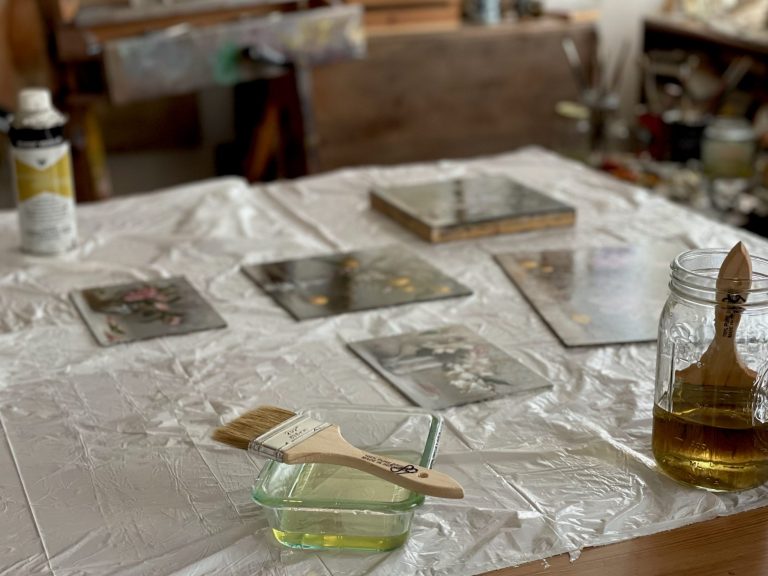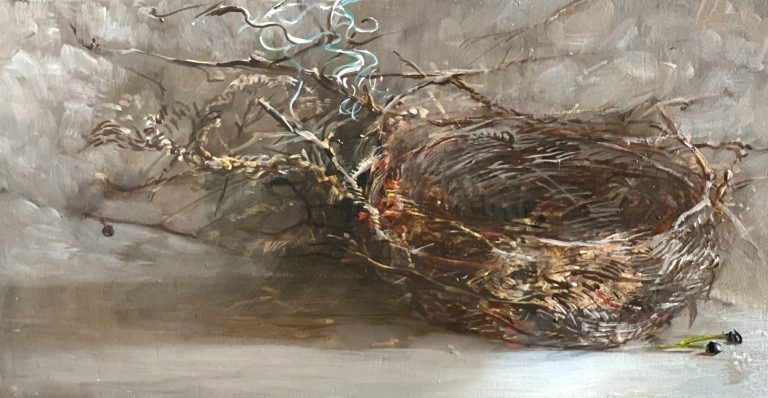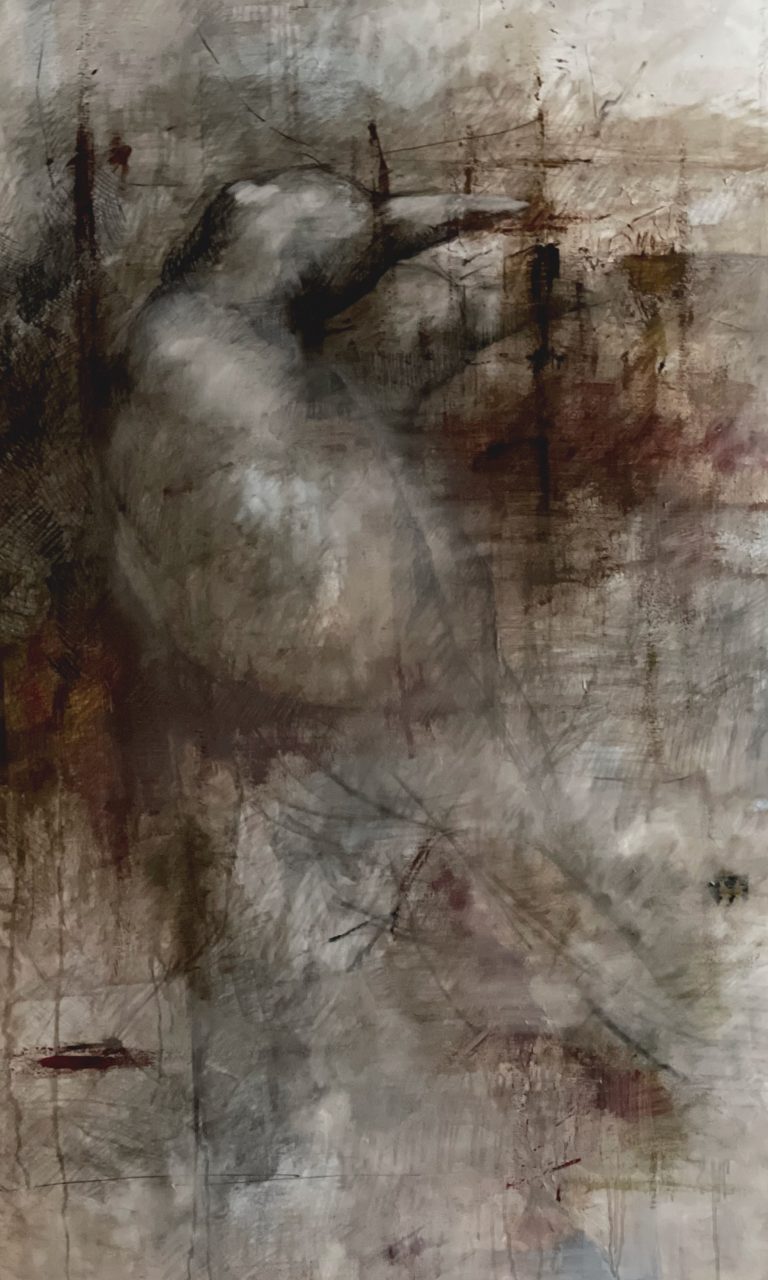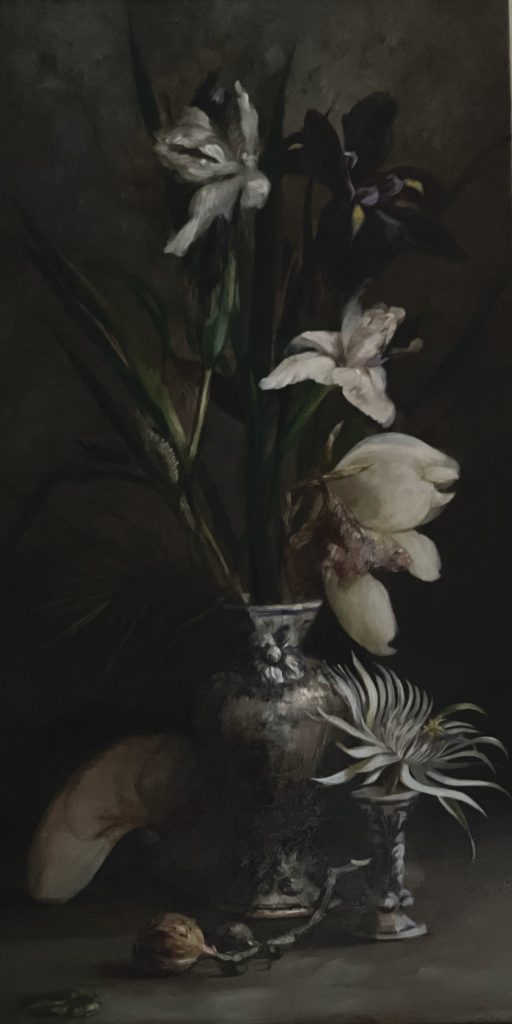
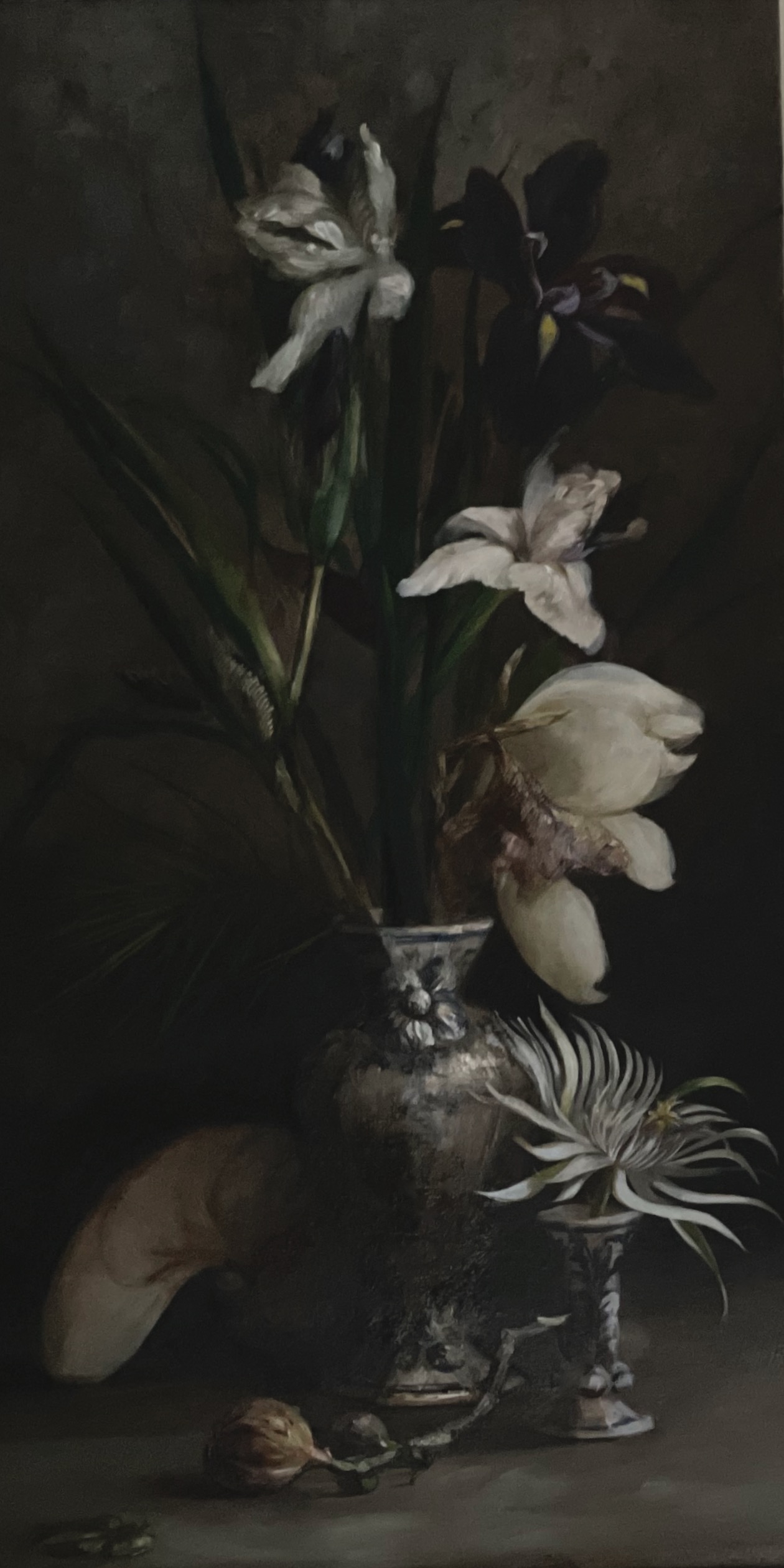
Vanitas I: Rights of Spring, Saskia Ozols. Oil on Panel, 24″ x 12″ 2024.
This group of Vanitas paintings explore the relationship between the material and the spiritual through the use of symbolic objects. Traditionally this genre was used in history for meditation on mortality, materiality, and meaning.
In these works, I have contrasted antique and contemporary objects for the same end: to provide opportunity for contemplation on cycles of life alongside questions of mortality, ethics, and balance between intellectual or material pursuits.
This painting addresses the cycle of life through relationships found in nature. Vanitas I: Rights of Spring explores a series of flowers and natural objects in various states arranged in a setting with symbols of both life and death.
The flowers are Louisiana irises in full bloom as well as a wilted state, magnolia blossom about to bloom, and a night blooming cereus flower. All flowers are from my garden or our family property in the wetlands of Mississippi.
The night blooming cereus in the foreground bridges day and night-symbolically connecting the act of living with the process of dying. As an entry point to the composition as well as focal point it is meant to connect the symbolism of night and day.
The delft vases are antique items from the Netherlands which I inherited from my maternal grandmother.
The fig branch in the foreground represents opportunity and new beginnings.
This painting is part of a series which I will be exhibiting at Gryder Gallery for White Linen Night 2024 in the New Orleans Arts District. Please join us on August 3rd for the reception !
I paint from direct observation, which means that I set up an arrangement on a table in front of my easel, and then paint it relying solely on hand eye coordination. I do not use photography. Vey often I begin by painting an empty vase, and then as things blossom I place them in the vase. In this case I first placed the irises in the vase and painted them, left them there for an understanding of the relationships between positive and negative space, and then added a magnolia, -as I was painting the magnolia the irises wilted and I also painted them in their wilted position.
When my night blooming cereus blossomed, I had a small vase ready for it to go in. I picked it at sunrise and painted as quickly as possible. Lastly, I added the fig branch and ripe fruit.
I see painting as a meditation: an exploration of relationships I encounter through observation and experience. I find greatest inspiration working from nature; considering innate dualities as they move through varied passages of color, meaning, and form. The resulting images reflect the search for meaning as a journey through the fluidity of perception, the passing of time, and the structure of change.
